(FOR ENGLISH VERSION, SCROLL DOWN)
Uma maneira de descobrir ótimos atrativos roots, que voce pode fazer com os seus próprios meios é conversando com as pessoas, locais e turistas. Sim, existem muitos como nós. Na véspera havia conhecido um casal de franceses que me deu várias dicas. Uma delas foi pegar um ônibus municipal até Santa Rosa. Ele passa na rua principal de Puerto Ayora rumo ao Norte (direção aeroporto) até Santa Rosa, um pequeno povoado a 10 km de distancia. Lá tem duas Reservas de Tartarugas Gigantes, os Galápagos, que deram o nome ao arquipélago: Finca Primicia e El Chato.
Estes enormes répteis povoam as ilhas há milhões de anos e, ao que parece, já foram mais de 100 mil divididos em dezenas de espécies, com pequenas diferenças entre elas, em geral nas carapaças. Há alguns séculos começaram a ser dizimadas. Os piratas e navegadores descobriram que elas podiam ficar até um ano sem comer e beber. Então as levavam vivas nos navios. Eram usadas também para produzir óleo que alimentavam lamparinas na capital, Quito.
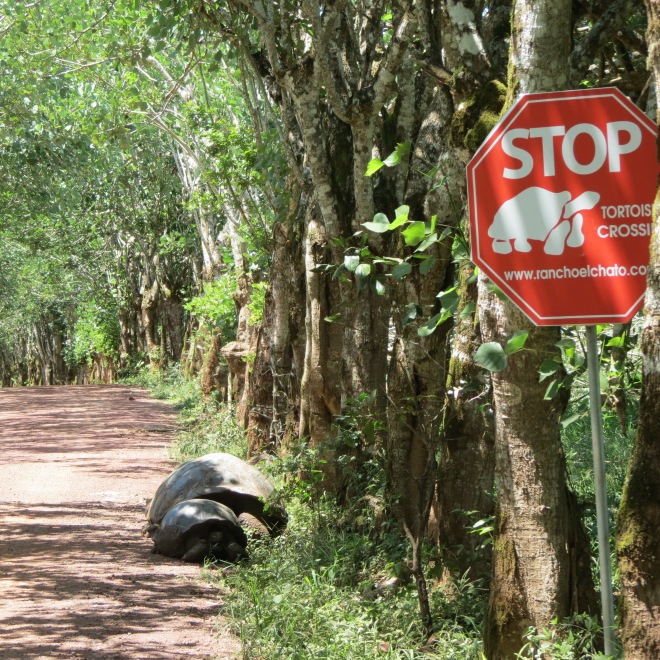
Algumas especies foram extintas. Pela exploração do homem e pela atividade vulcânica. A ultima espécie a desaparecer foi a do mundialmente famoso “Solitário George”, que virou marca pela preservaçao de Galápagos. Ele foi o ultimo exemplar macho de uma espécie única encontrado na Ilha de Pinta ao Norte do arquipélago, em 1978.
Apesar dos muitos esforços não conseguiram fazê-lo reproduzir nos seus últimos trinta anos de vida até que morreu, solitário, em 2012.
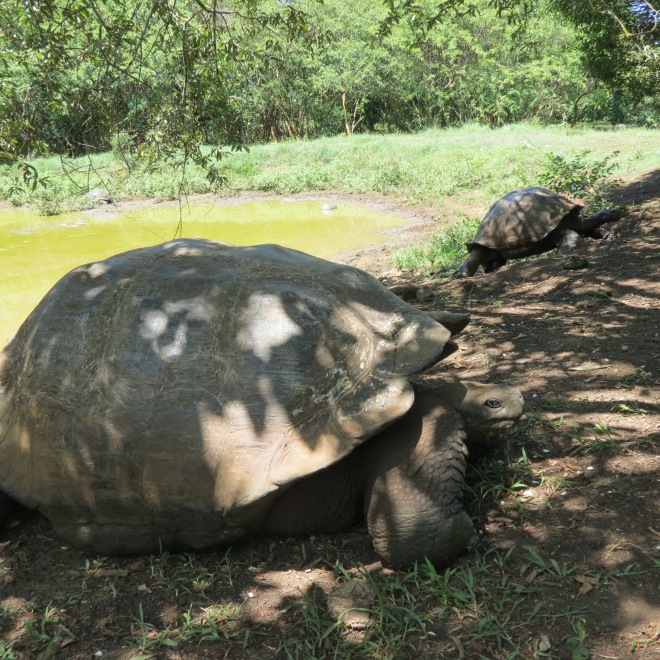
Cágado / Tortoise
No dia que passei pelo Centro de Pesquisa do Parque Nacional, em Santa Cruz, o corpo do “Solitário George” estava voltando preservado depois de estudos taxonômicos no exterior. Estavam inaugurando um setor dedicado somente á ele, onde ficará a partir de agora exposto como simbolo da conservação das espécies únicas de animais e plantas de Galápagos.
Depois de descer na entrada de Santa Rosa tem uma caminhada de uns 4km. Consegui uma carona num ônibus de turismo vazio. O motorista foi muito legal e parou sem eu pedir. Já bem perto da Reserva desci e fui andando.
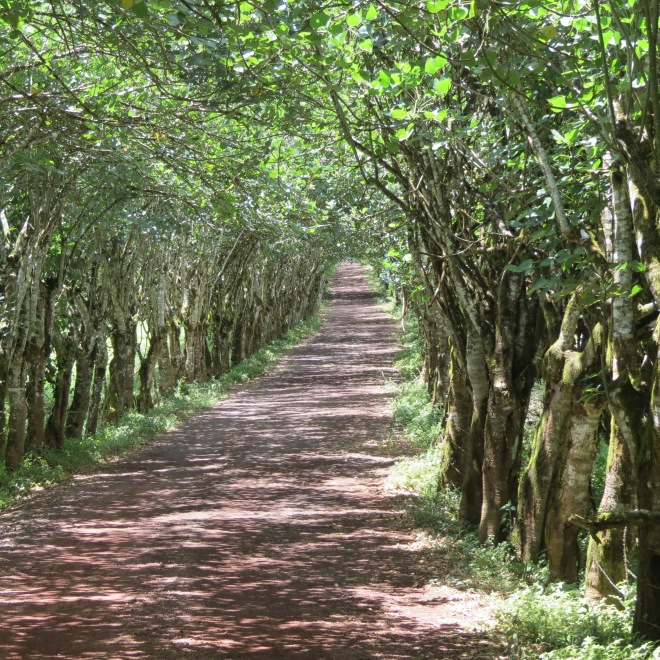
Manzanillos fecham em forma de tunel / Manzanillos making a green tunnel
Ao chegar lá, foi bem engraçado. Tudo sempre está preparado pra receber massas de turistas em ônibus lotados. Eles já tinham chegado e estavam dentro da reserva. Então toda atenção estava voltada pra eles. Eu cheguei sozinho e fui pra recepção pagar o ingresso de US$ 3. Mas não havia ninguém. Chamei varias vezes e esperei um tempo. Nada. Não esperavam por um viajante chegando sozinho e andando. Desisti de esperar. Entrei sem pagar e fui curtir o passeio entre os galápagos.
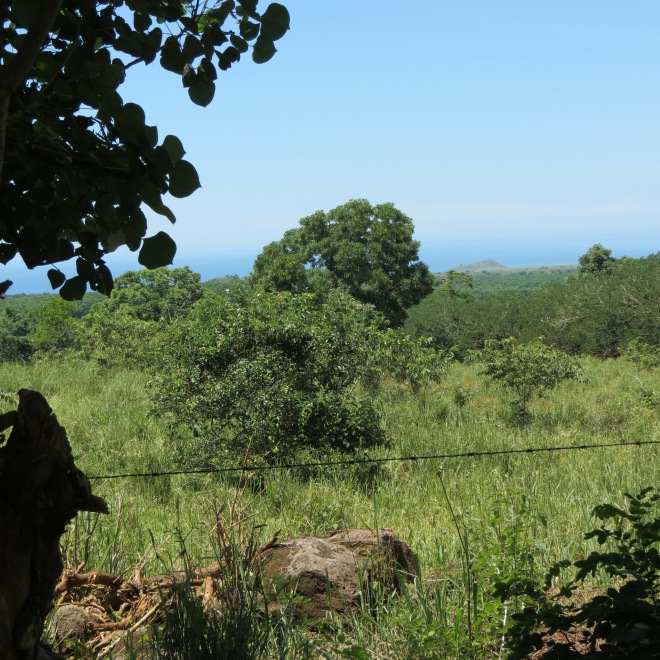
Paisagem da Ilha Santa Cruz / Santa Cruz´s island landscape
É uma grande oportunidade de vê-los soltos na natureza, apesar de estarem também em outras partes do arquipélago. São lindos e alguns são enormes, pesando centenas de quilos. Quando nos aproximamos muito eles se recolhem na carapaça e emitem um chiado para afastar “o inimigo”.
Estes cágados gigantes parecem lentos mas eu vi um macho “correndo” muito rápido atrás de uma fêmea bem menor que ele.
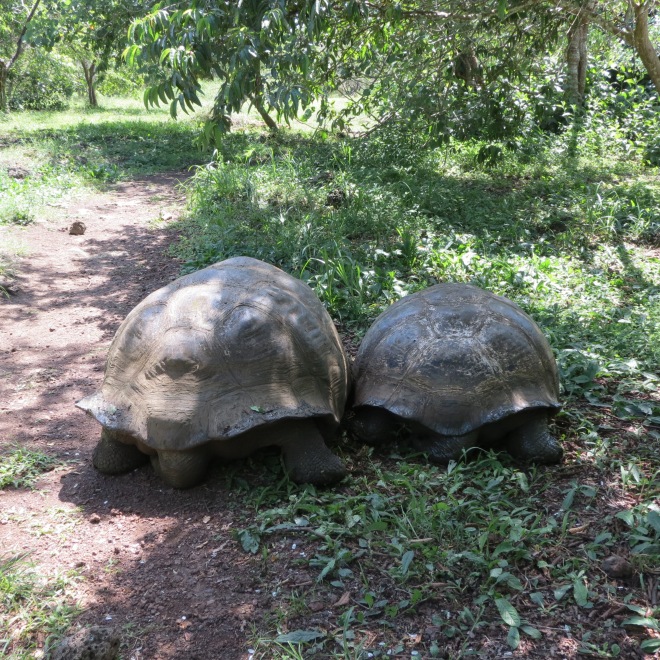
Um casal / A couple
Além das tartarugas andando soltos pela Reserva, outra atração impressionante da Reserva El Chato é o Túnel de Lava. Também são comuns nas outras ilhas, mas este da El Chato tem centenas de metros de comprimento e uns 20 metros de altura. Eles se formaram devido as “corridas” de lavas fluidas que saíam dos vulcões. A parte externa e superior da massa fluida de lava, em contato com a atmosfera se resfria, enquanto a parte interior continua quente fluida e “correndo”, formando o túnel.
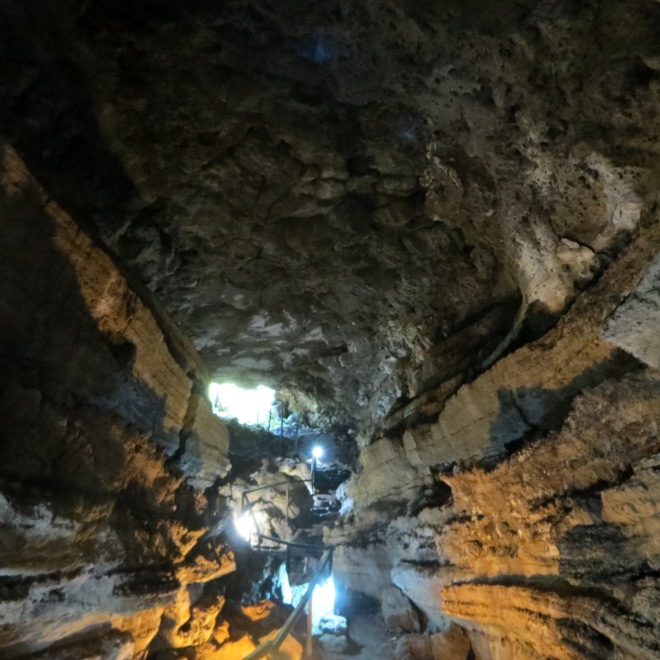
Tunel de Lava / Lava Tunnel
Na volta peguei a estradinha de terra que é muito charmosa com arvores tambem em forma de tunel. Quando cheguei no asfalto estendi o dedo. E logo parou uma caminhonete-taxi. Fui de carona na caçamba até Puerto Ayora.
(ENGLISH VERSION)
The best way to find “root atractions”- that you can do by your own – is talking with people. Locals or tourists. Yes, there are many like us. The day before, i´ve met a french couple that were crossing South America during two years with a motorhome. They gave me many tips about what to do in the archipel. One of them was to catch a public bus – that pass by the main street of Puerto Ayora heading North (airport direction) – till Santa Rosa, a small village 10km far away. There are two Giant Tortoise Reserves.
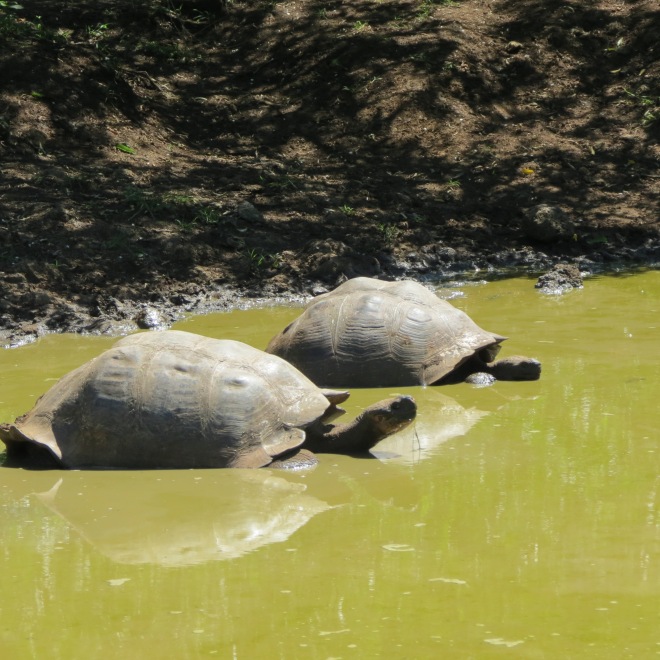
No lago de lama se refrescando / Refreshing in a mud-lake
These reptiles – called “galapagos” in spanish (yes, they named the archipel) – are living in the islands for millions of years. They were once upon the time more than 100.000. Many different species with tiny differences between each other.
Few centuries ago they started to be decimated by hunters. The pirates and sailors discovered tortoises could survive approximately one year without any food and water. Then they kept them into the sailboats. They were also used to make oil used in the lamps in Quito.
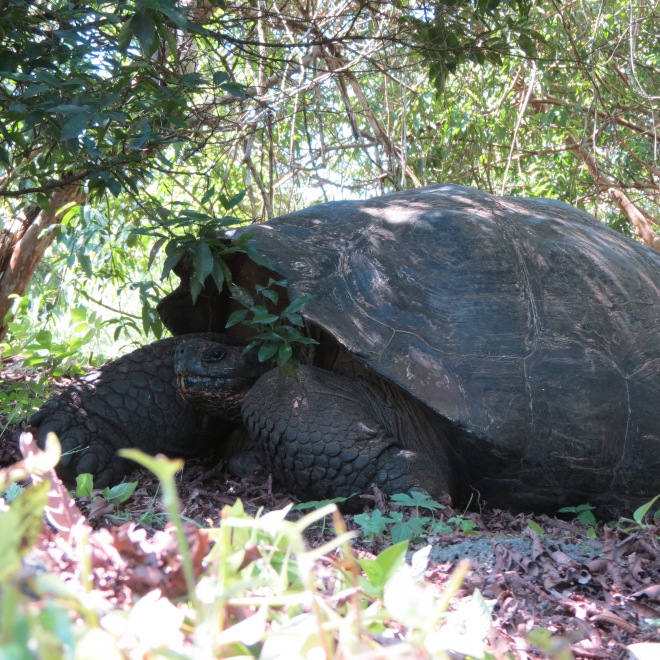
Tartarugas gigantes (que na verdade são cágados) e são chamadas de galapagos em espanhol / Giant tortoises that are called galapagos in spanish language
Some species were extinct because these human being exploitations. Other by vulcanic activity. The last specie extinction was the one of worldwide famous “Lonely George”. This male was transformed in a brand of Galapagos preservation. He was the last tortoise of his specie found in 1978 at Pinta Island, in the northern part of the archipel. In spite of huge efforts it was not possible making him reproduce in his last thirty years of life. So, he died, lonely, in 2012.
The day i passed by National Park Research Center at Santa Cruz island, the Lonely George was coming back preserved after years of taxonomic studies abroad. They were lauching a new sector dedicated exclusively to him in the museum. Since now he will be exposed for the public as a conservancy symbol of Galapagos´ unique plants and animals species.
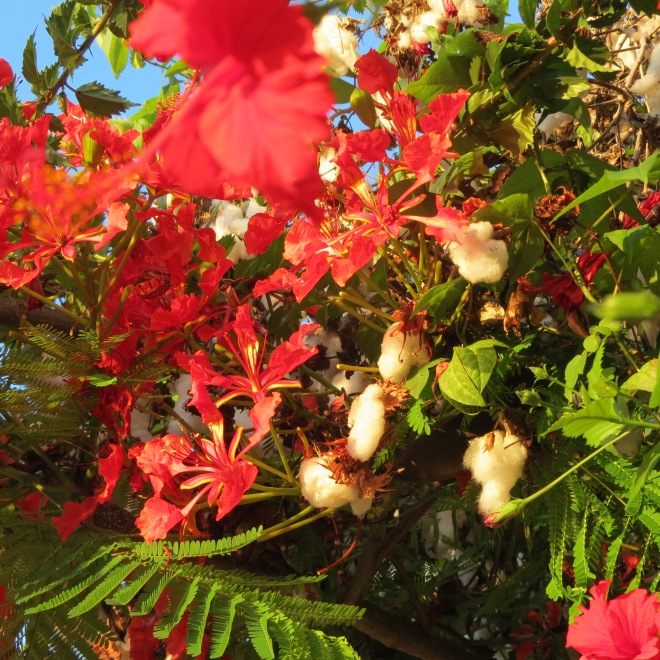
Flores de Galapagos / Flowers of Galápagos
After getting off the bus in Santa Rosa still have to walk for around 4km. I´ve got a hitchhike in a empty touristic bus. The driver was very cool and stopped to me without any sign. We´ve talked about brazilian soccer players of the past.
When i reached the tortoise reserve something very funny happened. Everything is ready to host large groups of tourists. And they arrived before me . So, all attention was focused on them. I arrived alone and headed the reception in order to pay the fee.
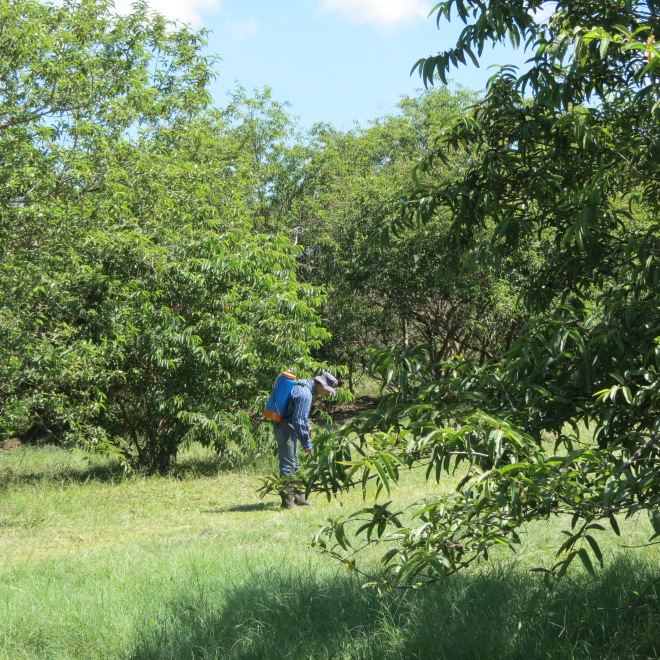
Um homem borifando veneno pra formigas numa reserva dentro do Parque Nacional (uh?) / A man spraying ants poison in a reserve of a National Park (uh?)
I called for someone many times and waited for a while. Nothing. Nobody came. They don´t expect a lonely traveler arriving by his own. Finally i´ve decide to get in and enjoy my natural tour with the galapagos for free.
It is an amazing opportunity to see giant tortoises walking around in nature. Eventhough they are also in other parts of the archipel.
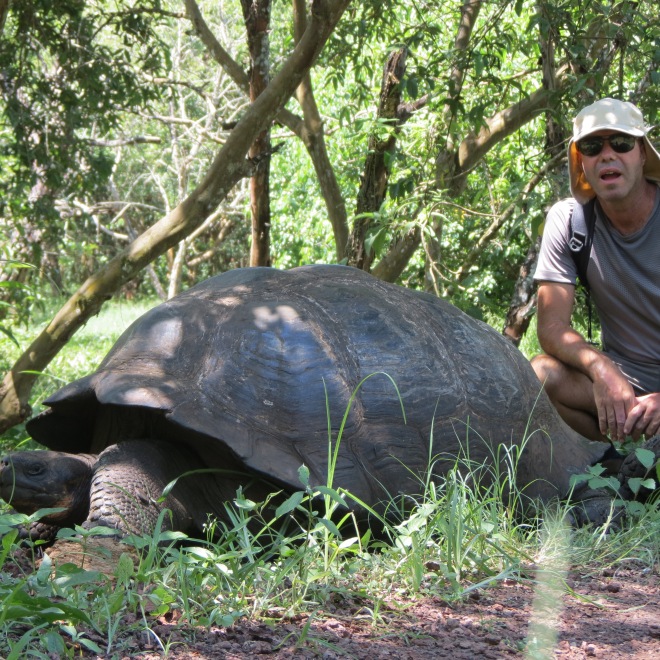
Uma tartaruga gigante / A giant tortoise
These animals live in the Earth for hundreds of millions of years. They seem to be slow and fragile but they could survive and adapt themselves very well all this time. I saw a male running very fast after a younger female. They are beautiful and some are very big, weighting hundreds of kilos. When we get too close they hide themselves in the carapace and produce a sound trying to keep the “enemy” far enough.
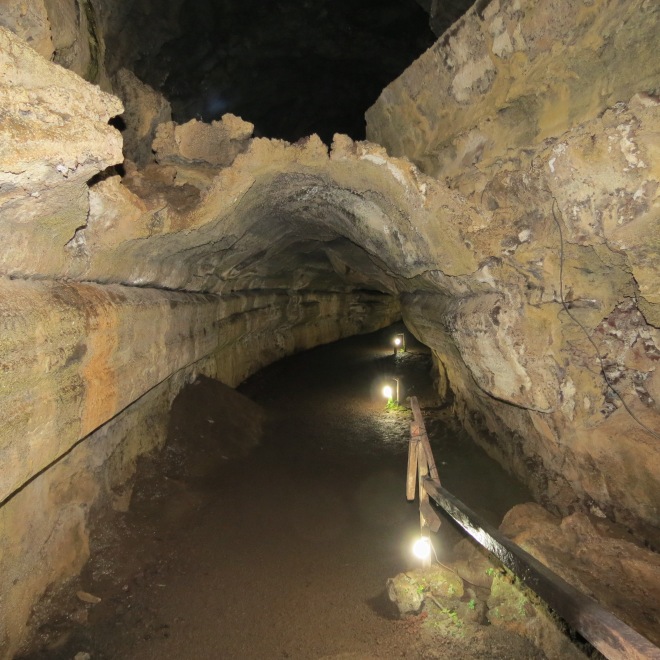
Túnel de lava da Reserva El Chato / El Chato reserve´s ´s Lava Tunnel
Beside tortoises creeping free in the nature another amazing spot in El Chato Reserve is the Lava Tunnel. They are also everywhere in the archipel but this one is great. Hundreds of meters long and around 20 meters high . They were formed because of “lava running”. The fluid lava going out of the volcanoes got cold and hard first at the external part (in contact with atmosphere) instead internal part keep running fluidly, making these tunnel shape.
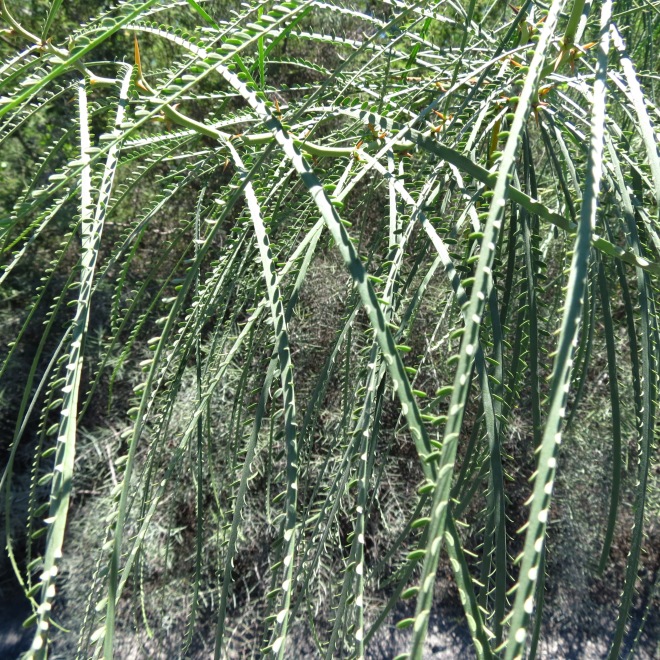
Estranhas folhas de uma arvore de Galápagos talvez uma espécie endêmica/ Weird leaves of a tree of Galapagos maybe andendemic specie
Coming back, through the little dirt road with all manzanillo trees also forming a tunnel. A green one. When i´ve got the main road i did hitchhike and a truck-taxi stopped, so i could came to Puerto Ayora fastly comfortably seated in the back part of the truck.
